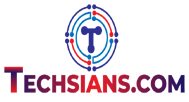Machine Learning (ML) and Artificial Intelligence (AI) are important drivers of development and innovation throughout industries, including education. While AI-powered solutions in EdTech have been around for a while, the industry has been cautious to adopt them. In contrast, the pandemic dramatically changed the environment, forcing instructors to rely on technology for virtual education.
Now, data suggests that some 86 percent of educators believe technology should be an integral component of education.
If you’d like to learn or teach new things using modern methods, including AI, you can try Quetab.com
AI has the potential to improve both learning and teaching, assisting the industry to evolve in benefitting both students and instructors. AI can assist the education sector by simplifying and automating the industry in a variety of beneficial ways.
Here are five ways Machine Learning and Artificial Technology are assisting and changing the EdTech sector, by helping both students and teachers.
Enhancing educational quality
AI and ML learning are being introduced into the online education sector by EdTech platforms to aid students, instructors, and institutions in increasing educational quality. Machine learning’s ability to analyze learner progress and adjust courses to response to students’ actual needs is a significant advantage in education, boosting engagement and providing high-quality instruction.
Feedback from ML algorithms enables teachers to better understand their students’ potential and interests, identify problematic students, identify skill gaps, and give additional support to help students overcome learning obstacles.
Using AI, EdTech can solve the challenges involved with addressing the demands of students with diverse aptitudes. The technology can help professors and students create courses that are tailored to their specific requirements, as well as offer feedback on the overall performance of the course.
Some schools are already utilizing EdTech that use AI algorithms to track student progress. It also alerts teachers when a student’s performance is deficient.
Tailored Learning Approach
Personalization is one of the most prominent trends for EdTech. AI can adjust to each student’s level of expertise, learning speed, and intended goals to ensure they get the most out of their education. Furthermore, AI-powered systems can assess students’ past learning histories, detect deficiencies, and recommend courses best suited for development, allowing for a highly personalized learning experience.
Machine learning in education is enabling new hyper-personalized experiences in which each learner is guided via a customized learning route via an online program. A learning route is a set of courses and resources provided to a student depending on his or her prior educational experience, knowledge and abilities, current progress, preferences, and learning style.
With such an elevated level of customization, educators can dynamically provide tailored and learner-centric information to their audiences. In other words, by employing ML algorithms, you can instantly make your content smarter and more intuitive.
AI Tutors
While it is normal for kids to seek extra assistance outside of the classroom, many teachers do not have the time to support students after school. AI instructors and chatbots are ideal in these situations.
While no chatbot can fully replace a teacher, AI technologies can assist students in honing their abilities and improving weak points outside of the classroom. They offer a one-on-one learning experience without the teacher being available to answer questions at all hours of the day. In fact, an AI-powered chatbot can respond to student inquiries in 2.7 seconds.
Currently there are many Artificial Intelligence Certification in New York-based teaching programs currently exist and can assist kids with fundamental arithmetic, writing, and other disciplines. While they may not be perfect for higher order thinking and creativity, they do help kids learn the essentials.
Teacher and AI Collaboration
In the past, AI has been used in education, notably in skill development tools and testing systems. As AI educational solutions improve, the goal is that AI will be able to cover gaps in learning and teaching, allowing schools and instructors to accomplish more than ever before.
AI can increase efficiency, customization, and streamline administrative duties, giving instructors more time and freedom to give understanding and adaptability—human qualities that robots lack. By combining the greatest qualities of machines and instructors, the vision for AI in education is one in which they collaborate to get the best results for students of all ages.
Inquiry Automation
By automating activities, evaluating student performance, and narrowing the educational gap, AI can help free up instructors’ time.
Because AI-powered chatbots have access to a school’s full knowledge base, they can answer a range of generic and repetitive queries that students frequently ask without contacting a teaching person. By avoiding the educator, AI frees up time for them to focus on lesson planning, curriculum research, and increasing student engagement.
AI can automate fundamental activities
The power of AI can automate the most basic operations, such as administrative work, grading papers, analyzing learning patterns, responding to general queries, and more. A Telegraph poll found that teachers spend 31% of their time preparing courses, grading tests, and doing administrative tasks.
Teachers, on the other hand, may use support automation technologies to automate tedious procedures, giving them more time to focus on teaching essential competencies.
We use machine learning on Quetab.com to help teachers generate content, like exam questions, and to deliver the best learning quality to our users.
Better Learning Outcomes
From online textbooks to remote courses, EdTech has advanced tenfold. AI is now used to assist students and teachers in optimizing and automating both learning and teaching processes. As the AI sector grows and innovation takes center stage, we will see better learning outcomes for all students and instructors. For the world of eLearning, these are exciting times.
Machine learning is quickly altering online classroom experiences and becoming one of the most competitive elements of any training program due to its widespread adoption in education. Place and time are no longer important – it’s all about offering interesting and personalized material, as well as personal assistance and support, to make learners’ time spent on training valuable.
Many additional AI applications for education are being developed, such as AI mentors for learners, smart content production, and a new form of personal growth for instructors through virtual worldwide conferences. Education may be a little slower to incorporate artificial intelligence and machine learning, but changes are underway and will continue.

